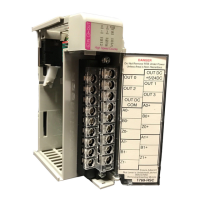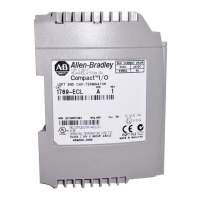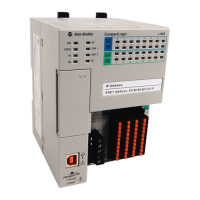Rockwell Automation Publication 1769-UM011H-EN-P - April 2012 105
Develop Applications Chapter 7
Add-on Instructions
With version 18 of RSLogix 5000 programming software, you can design and
configure sets of commonly used instructions to increase project consistency.
Similar to the built-in instructions contained in Logix5000 controllers, these
instructions you create are called Add-on Instructions. Add-on Instructions reuse
common control algorithms. With them, you can:
• ease maintenance by animating logic for a single instance.
• protect intellectual property with locking instructions.
• reduce documentation development time.
You can use Add-on Instructions across multiple projects. You can define your
instructions, obtain them from somebody else, or copy them from another
project.
Once defined in a project, Add-on Instructions behave similarly to the built-in
instructions in Logix5000 controllers. They appear on the instruction tool bar
for easy access, as do internal RSLogix 5000 software instructions.
Feature Description
Save Time With Add-on Instructions, you can combine your most commonly used logic into sets of reusable instructions. You
save time when you create instructions for your projects and then share them with others. Add-on Instructions
increase project consistency since commonly used algorithms all work in the same manner, regardless of who
implements the project.
Use Standard Editors You create Add-on Instructions by using one of three RSLogix 5000 software programming editors.
• Standard Ladder
• Function Block Diagram
• Structured Text
Once you have created instructions, you can use them in any RSLogix 5000 editor.
Export Add-on Instructions You can export Add-on Instructions to other projects as well as copy and paste them from one project to another.
Give each instruction a unique name so that you don’t accidentally overwrite another instruction of the same
name.
Add-on InstructionsUse Context Views Context views let you visualize an instruction’s logic for a specific instant, simplifying online troubleshooting of
your Add-on Instructions. Each instruction contains a revision, a change history, and an auto-generated help page.
Create Custom Help When you create an instruction, you enter information for the description fields in software dialog boxes,
information that becomes what is known as Custom Help. Custom Help makes it easier for users to get the help
they need when implementing the instructions.
Apply Source Protection As the creator of Add-on Instructions, you can limit users of your instruction(s) to read-only access, or you can bar
access to the internal logic or local parameters used by the instruction(s). This source protection lets you prevent
unwanted changes to your instruction(s) and protects your intellectual property.

